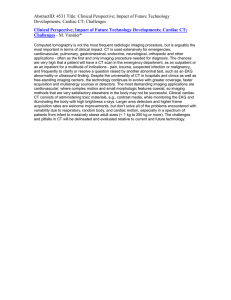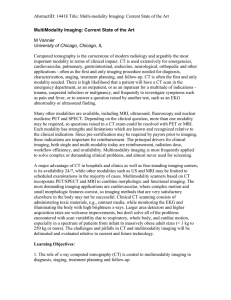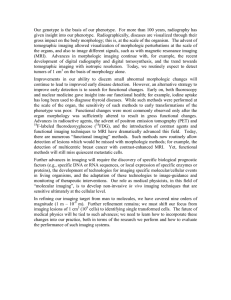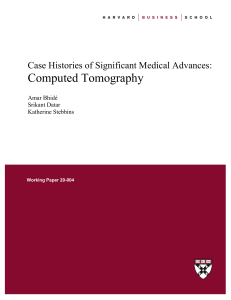AbstractID: 11982 Title: CT Clinical Perspective: Challenges and the Impact... Technology Developments
advertisement
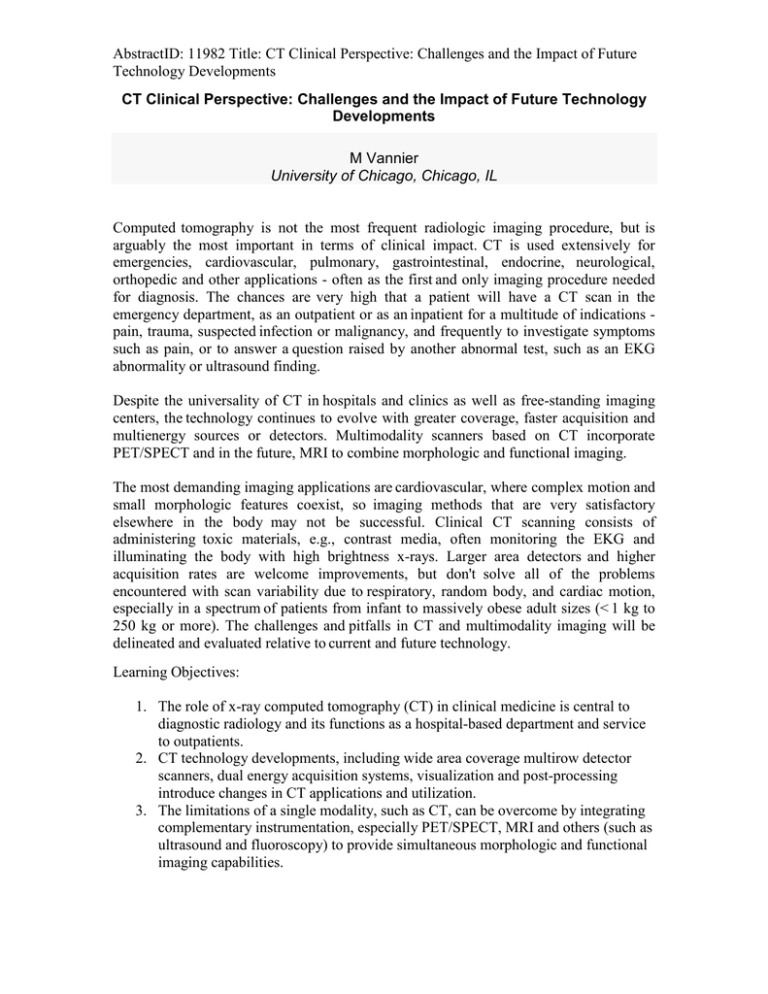
AbstractID: 11982 Title: CT Clinical Perspective: Challenges and the Impact of Future Technology Developments CT Clinical Perspective: Challenges and the Impact of Future Technology Developments M Vannier University of Chicago, Chicago, IL Computed tomography is not the most frequent radiologic imaging procedure, but is arguably the most important in terms of clinical impact. CT is used extensively for emergencies, cardiovascular, pulmonary, gastrointestinal, endocrine, neurological, orthopedic and other applications - often as the first and only imaging procedure needed for diagnosis. The chances are very high that a patient will have a CT scan in the emergency department, as an outpatient or as an inpatient for a multitude of indications pain, trauma, suspected infection or malignancy, and frequently to investigate symptoms such as pain, or to answer a question raised by another abnormal test, such as an EKG abnormality or ultrasound finding. Despite the universality of CT in hospitals and clinics as well as free-standing imaging centers, the technology continues to evolve with greater coverage, faster acquisition and multienergy sources or detectors. Multimodality scanners based on CT incorporate PET/SPECT and in the future, MRI to combine morphologic and functional imaging. The most demanding imaging applications are cardiovascular, where complex motion and small morphologic features coexist, so imaging methods that are very satisfactory elsewhere in the body may not be successful. Clinical CT scanning consists of administering toxic materials, e.g., contrast media, often monitoring the EKG and illuminating the body with high brightness x-rays. Larger area detectors and higher acquisition rates are welcome improvements, but don't solve all of the problems encountered with scan variability due to respiratory, random body, and cardiac motion, especially in a spectrum of patients from infant to massively obese adult sizes (< 1 kg to 250 kg or more). The challenges and pitfalls in CT and multimodality imaging will be delineated and evaluated relative to current and future technology. Learning Objectives: 1. The role of x-ray computed tomography (CT) in clinical medicine is central to diagnostic radiology and its functions as a hospital-based department and service to outpatients. 2. CT technology developments, including wide area coverage multirow detector scanners, dual energy acquisition systems, visualization and post-processing introduce changes in CT applications and utilization. 3. The limitations of a single modality, such as CT, can be overcome by integrating complementary instrumentation, especially PET/SPECT, MRI and others (such as ultrasound and fluoroscopy) to provide simultaneous morphologic and functional imaging capabilities.
